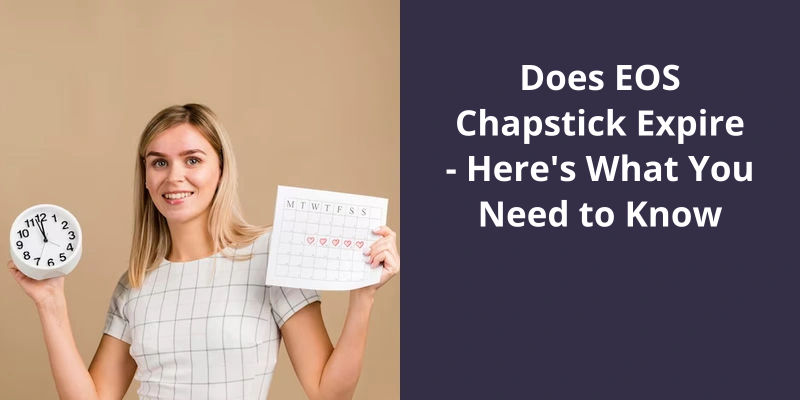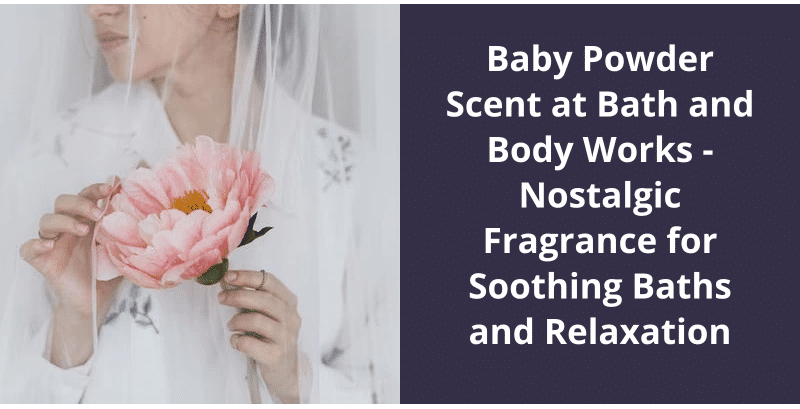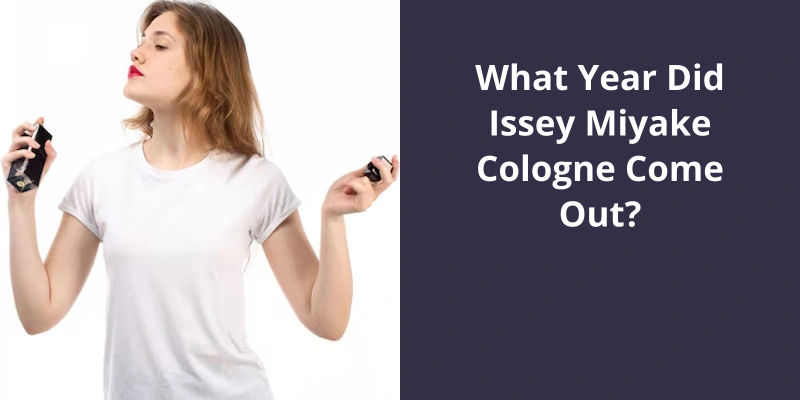Yes, EOS chapsticks do expire. They typically have a shelf life of approximately two to three years. However, the expiration date can depend on how often you use the product, where it’s stored, and the conditions of its storage. For example, if the chapstick is stored in a cool, dry place, it’s likely to last longer. It’s important to note that once a chapstick has expired, it might lose its effectiveness and the texture may change. It’s always a good idea to toss the chapstick if you notice any signs of mold or an off smell.

How Many Years Does ChapStick Last?
ChapStick ® products without an expiration date don’t expire, but they do have a recommended shelf life. Generally, it’s recommended to use the ChapStick ® within one year after opening for the freshest experience. This ensures that the products effectiveness and quality are maintained. Storing ChapStick ® at a temperature of 20-25°C (68-77°F) is also advised to ensure it’s longevity.
While ChapStick ® offers a wide range of flavors, it’s always possible that new flavors may be introduced in the future. The brand is constantly innovating and striving to meet the diverse preferences of it’s customers.
What Happens if You Use ChapStick After It’s Recommended Shelf Life?
If you use ChapStick after it’s recommended shelf life, it may not provide the same effectiveness or benefits as before. Over time, the ingredients in ChapStick can degrade, leading to a less effective product. This can result in less moisturizing and protective qualities, potentially leaving your lips dry and chapped.
EOS lip balms might not be the best option for dealing with chapped lips, as they can leave a waxy texture similar to ChapStick. However, some people may enjoy this feeling and find it convenient to keep an EOS lip balm in their car due to it’s resistance to melting in the summer heat and freezing in winter.
Is EOS a Good Brand for Chapped Lips?
EOS lip balms have gained popularity over the years for their unique spherical shape and vibrant packaging. But when it comes to treating chapped lips, are they really worth considering? Well, the answer is a bit subjective.
One advantage of EOS lip balms is that they don’t melt easily in hot weather. This can be particularly beneficial during the scorching summer months when traditional lip balms may turn into a gooey mess.
If you enjoy the waxy texture and find that they provide enough hydration for your needs, then EOS may be a good brand for you. However, if you require a more intensive moisturizing formula, it might be worth exploring other options. Remember, what works for one person may not work for another, so it’s essential to find the right product that caters to your specific needs.
Source: How are Eos lip balms good for cracked lips? – Quora
Using an expired lip balm may not seem like a big deal, but it’s important to be aware of the potential risks involved. Expired lip balms can lose their effectiveness and even harbor harmful bacteria, putting your lips at risk. It’s always better to err on the side of caution and invest in a fresh lip balm to ensure proper hydration and protection.
Is It Okay to Use an Expired Lip Balm?
Using an expired lip balm isn’t recommended, and it’s best to discard it and purchase a new one. While lip balms can offer relief and protection for dry and chapped lips, they do have a shelf life.
Expiration dates on lip balms are usually determined by the manufacturer and are an indication of the period during which the product is expected to be at it’s best quality. This includes the consistency, texture, and efficacy of the active ingredients. As the lip balm ages, it’s formula may change, becoming less effective at moisturizing and protecting the lips.
Furthermore, exposure to air, heat, and sunlight can also contribute to the degradation of a lip balm. Therefore, it’s important to store your lip balm in a cool and dry place, away from direct sunlight or extreme temperatures, to help extend it’s shelf life.
The quality and efficacy of the product can deteriorate over time, potentially increasing the risks of bacterial growth and skin reactions.
When it comes to choosing the right chapstick, it’s essential to be mindful of the ingredients it contains. While many popular brands offer hydration and protection for your lips, there are a few you might want to avoid. Some chapsticks like Chapstick, Blistex, EOS, and Carmex contain ingredients that could potentially irritate your skin. Let’s explore a few alternatives that prioritize natural and nourishing ingredients for optimum lip care.
Which Chapsticks to Avoid?
When it comes to choosing a chapstick, it’s important to be aware of what ingredients are included. Some chapsticks on the market may contain ingredients that could potentially be harmful to your skin. Here are a few to avoid.
One brand to steer clear of is Chapstick, as it contains petrolatum and synthetic fragrances. Petrolatum is a common ingredient found in many petroleum jelly-based products, but it can potentially clog pores and cause skin irritation. Synthetic fragrances, on the other hand, can be allergenic and irritating to sensitive skin.
Another popular brand, Blistex, also has some ingredients to be cautious of. This includes parabens, synthetic fragrances, and salicylic acid. Parabens have been linked to hormone disruption, while synthetic fragrances can cause skin allergies. Salicylic acid, a common ingredient in acne treatments, may be too harsh for those with sensitive or dry lips.
EOS, known for their unique spherical packaging, may not be the best choice for everyone. This is because it contains phenoxyethanol, a preservative that can cause skin irritation. While it may not cause problems for everyone, those with sensitive skin or allergies may want to avoid it.
Carmex is another brand that’s ingredients to keep an eye out for. It contains petrolatum and salicylic acid.
Understanding the ingredients in your chapstick is essential for maintaining healthy lips.
EOS hand cream is designed to provide 24-hour hydration and continuous skin protection, making it perfect for those with dry skin. Combining the benefits of lightweight shea oil and ultra-rich shea butter, this lotion delivers immediate moisture and long-lasting results, even after repeated hand-washing. But how long does the effectiveness of EOS hand cream truly last? Let’s find out.
How Long Is EOS Hand Cream Good For?
EOS hand cream is designed to provide long-lasting hydration and protection for dry skin. With it’s unique combination of lightweight shea oil and ultra-rich shea butter, it effectively moisturizes the skin for up to 24 hours. This means that you can enjoy soft and hydrated hands throughout the day without constantly reapplying the cream.
Many hand creams tend to wash off easily, requiring constant reapplication after every wash. This is especially beneficial for those who work in environments where frequent hand-washing is necessary.
When it comes to the expiration date of EOS hand cream, it’s important to note that skincare products, including hand creams, do have a shelf life. It’s generally recommended to use the hand cream within 12 months of opening to ensure optimal effectiveness and freshness.
To extend the lifespan of your EOS hand cream, it’s important to store it in a cool and dry place. Exposure to heat and moisture can cause the product to degrade more quickly. Additionally, it’s good practice to replace your hand cream if you notice any changes in smell, texture, or color. These could be signs of product degradation or potential bacterial contamination.
1) Proper Storage of Hand Creams: Provide Tips on How to Store Hand Creams Properly to Extend Their Shelf Life and Prevent Degradation or Bacterial Contamination.
Proper storage of hand creams is crucial in prolonging their shelf life and maintaining their effectiveness. To prevent degradation and bacterial contamination, follow these essential tips:
- Keep hand creams in a cool, dry place away from direct sunlight. Exposure to heat and light can cause the ingredients to break down and lose their efficacy.
- Avoid storing hand creams in the bathroom, as the humidity and fluctuating temperatures can promote bacterial growth.
- Always seal the lid or cap tightly after each use to prevent air and moisture from entering the container, which can lead to product spoilage.
- Consider using a cosmetic spatula or clean fingers to retrieve the cream from the container instead of directly touching it. This minimizes the risk of introducing bacteria into the product.
- If the label specifies a specific temperature range for storage, adhere to those guidelines to ensure the product remains stable and effective.
- Regularly check the expiration date on the packaging. Hand creams typically have a shelf life of one to two years, but it’s best to discard them once they reach their expiration date to avoid any potential adverse effects.
- If you notice any changes in texture, color, or scent, or if the cream becomes watery or separates, it’s a sign that the product may have deteriorated, and it’s time to replace it.
By properly storing your hand creams, you can maximize their longevity, maintain their quality, and ensure that they remain safe and effective to use.
Conclusion
To determine the expiration date on your EOS product, you can refer to the 5 or 6-digit lot code engraved or printed onto the packaging.





